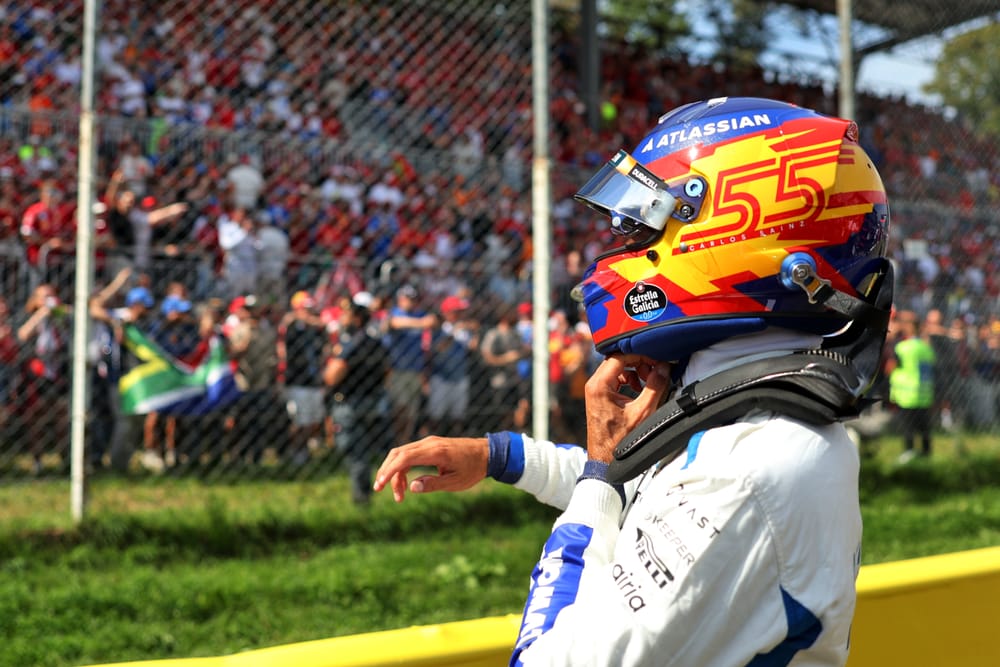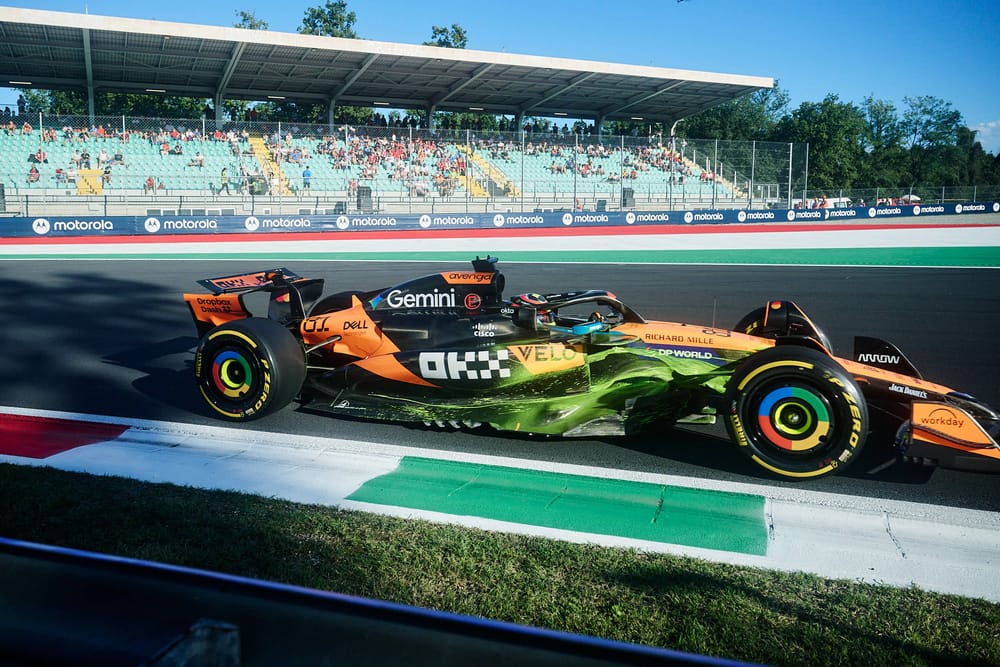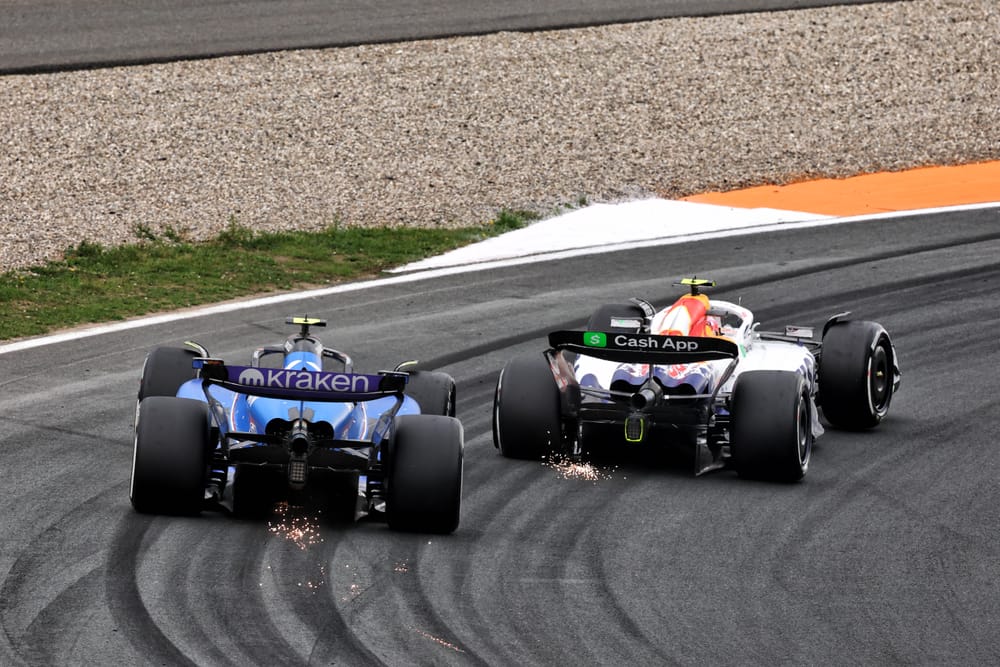The disparity between expectations of Carlos Sainz and the reality of his first season with Williams is stark. While the team’s form has improved dramatically, leaping from ninth in the constructors’ championship in 2024 to fifth and leading midfielder this year, Sainz himself has disappointed.
The numbers tell a troubled story. Sainz has scored just 16 points from seven top-10 finishes, including his sixth in the Spa sprint, with a best finish of eighth. By comparison, team-mate Alex Albon has banked 70 points and a quartet of fifth places. On adjusted average, Albon’s qualifying advantage is 0.104%, equivalent to 0.083s around a hypothetical 80-second lap.
That Albon has been the stronger Williams driver so far in 2025 is irrefutable; every metric supports that, but anyone arguing Sainz has been ‘found out’ is oversimplifying. There’s more to it than that, one that confounds the easy narrative that Williams hasn't got what it paid for.
The short explanation usually offered for Sainz’s struggles is that he’s struggling to adapt to life at Williams. However, that’s reductive. It’s true that early in the season he regularly spoke of this, but both Sainz himself and the evidence of his performances suggest that’s not at the heart of the problem. He even caught himself reaching for that explanation during the Hungarian Grand Prix weekend when discussing his progress and corrected himself.
“It’s important that even if I’m taking my time to adapt to the team and the car…Well, I don’t think I took my time to adapt to the car, I was quite quick straight away,” he said. “It’s just getting results and putting things together that has been a struggle since the beginning of the year”.
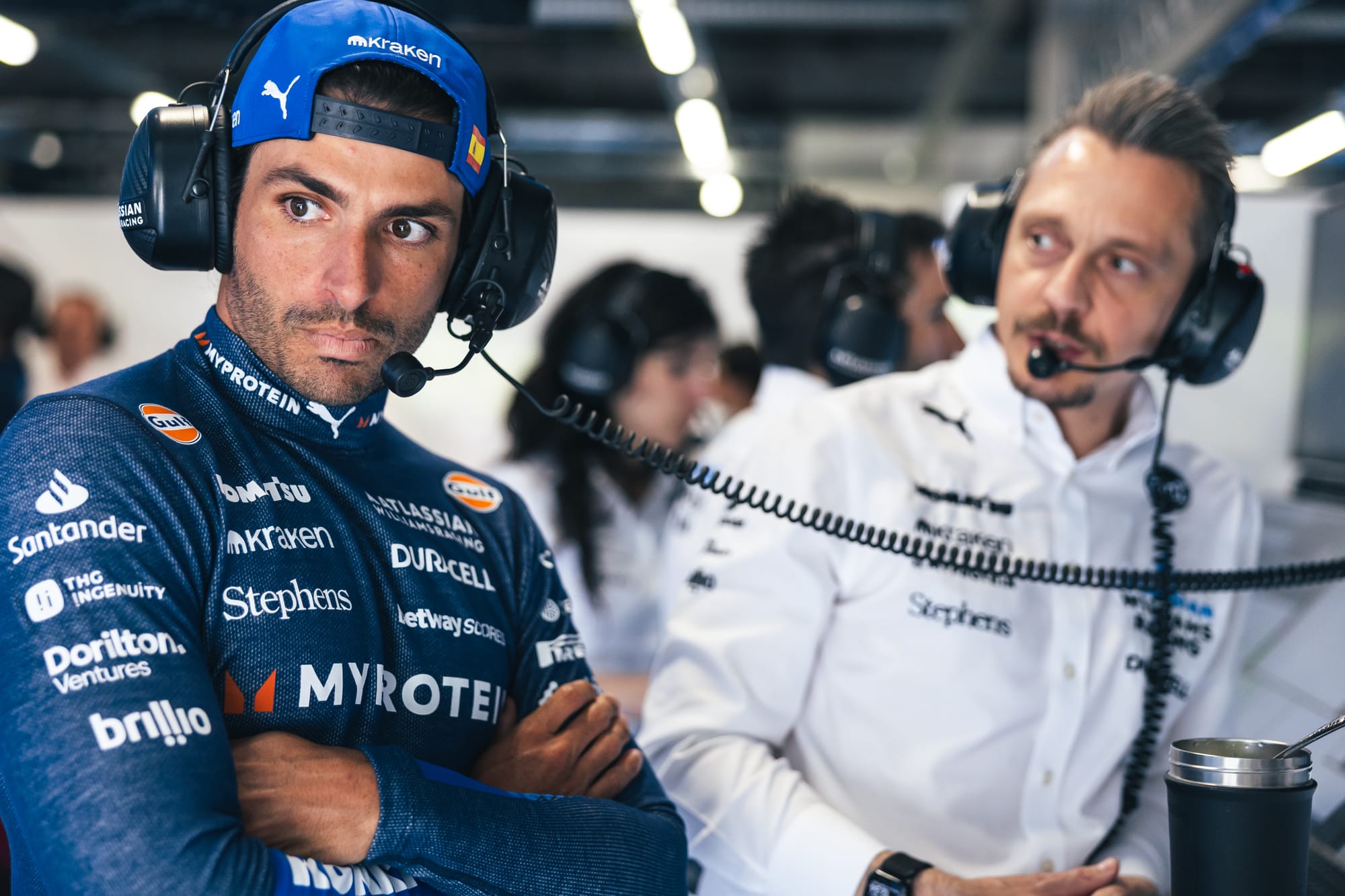
What Sainz says rings true. There are problems of the Williams that he doesn’t get on with, namely its struggles in ‘combination’ braking/turning and long corners. That’s a consequence of its limitations in yaw and the years of underinvestment that leaves Williams playing catch-up. It’s a limitation that impacts both drivers, with Sainz particularly struggling to make it work well with the understeer style he favours, which at his best means he carries high mid-corner speed.
He doesn't enjoy it, and it perhaps inhibits him a bit, but he's adapted well enough to live with it so while that is a general problem, it's not the main factor in his lack of points relative to Albon.
He’s also been caught out on a number of occasions by the tyre warm-up troubles of Williams, which is something that has limited both drivers at times. Starting out of position can kill your race, something that was showcased brilliantly at Spa. There, Sainz finished sixth in the sprint with a strong performance but hit trouble in grand prix qualifying and couldn’t recover from there, finishing 18th.
It's also not the case that he’s been universally slower than Albon, far from it. There have been occasional clean weekends and shown prodigious pace, with his strong Jeddah and Imola weekends standing out. There have also been weekends such as Hungary, where he did a good job with machinery that wasn’t working well and came away pointless despite a good showing. However, the key problem is that clean, consistent weekends have often eluded him.
Tempting as it is to draw parallels, it’s a very different situation from the one Lewis Hamilton is in at Ferrari, where pace struggles have been consistent.
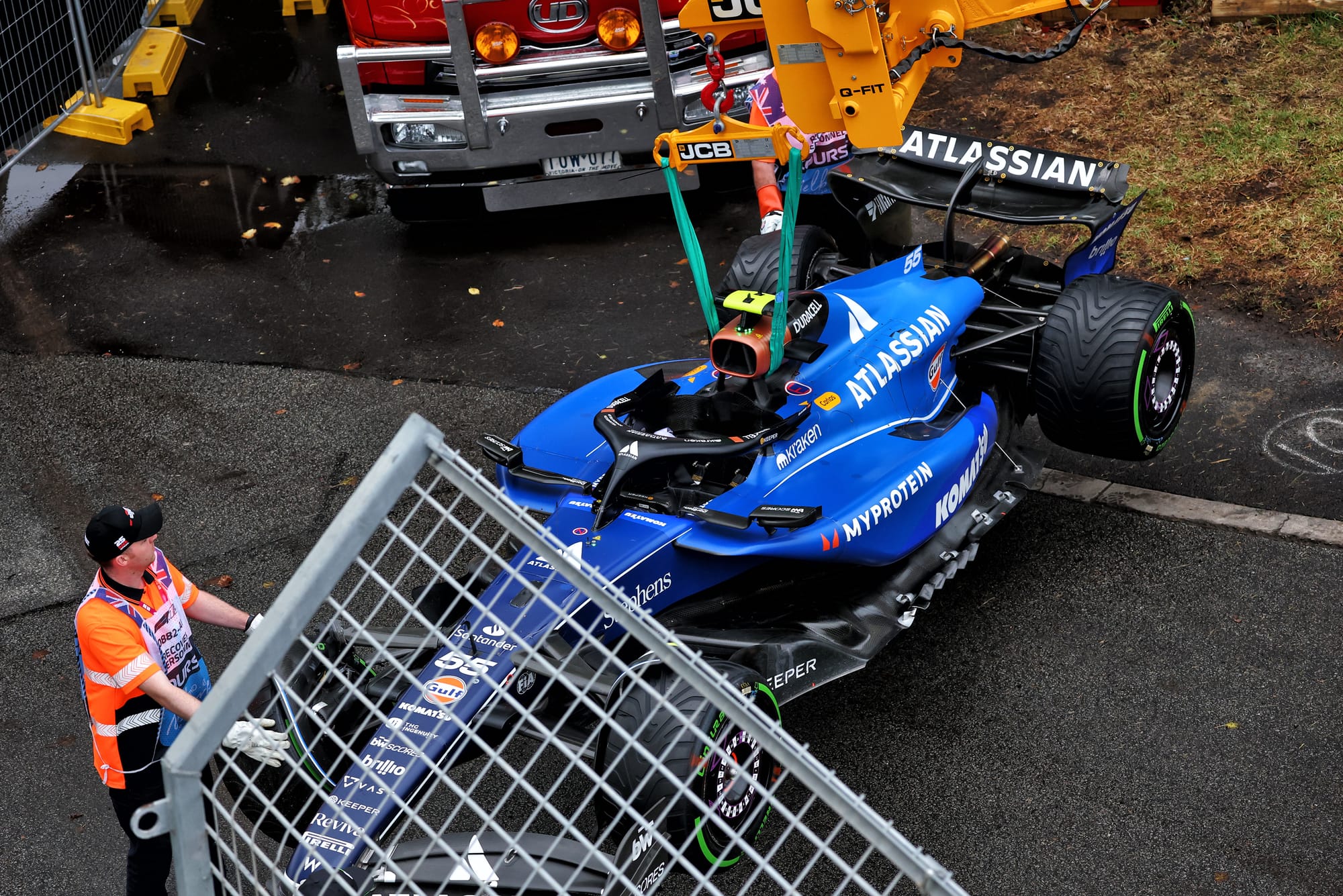
In total, 11 out of 19 races have been compromised by some kind of incident, accident or problem. In Australia, he crashed at the end of the first lap under the safety car after calling for a part-throttle upshift that, in safety car mode, led to unexpected torque-delivery characteristics. It was his mistake, but one that was at least understandable given his lack of familiarity with the Williams-Mercedes package. Two races later, in Japan, he was hit with the three-place grid penalty that stewards deemed the pitwall was to blame for.
In Bahrain, a clash with Yuki Tsunoda didn’t help, although he was unequivocally at fault for the subsequent collision with Kimi Antonelli that earned him a 10-second penalty. That was followed in Miami by a rookie error when he clobbered the wall at the chicane in the sprint while on course for points, then floor damage sustained in a clash with Albon at the start of the main event that was a result of the need for evasive action.
On to Spain and after struggling with the tyres in qualifying, he picked up front-wing damage on the first lap largely through happenstance. In Canada, he could only salvage a point after being badly impeded by Isack Hadjar in qualifying, which was followed by a DNS in Austria when his brakes seized.
At Silverstone, he was the innocent party in Charles Leclerc’s error, which caused damage while on course for a good result having had the edge on Albon, which was followed by his clashes with Liam Lawson at Zandvoort and Ollie Bearman at Monza. While stewards later exonerated Sainz on review after he was penalised for the Dutch GP clash, and held Bearman responsible at Monza, in both cases you can argue Sainz put himself in harm’s way and you can legitimately question whether his risk assessment was clouded by the determination finally to get some good results.
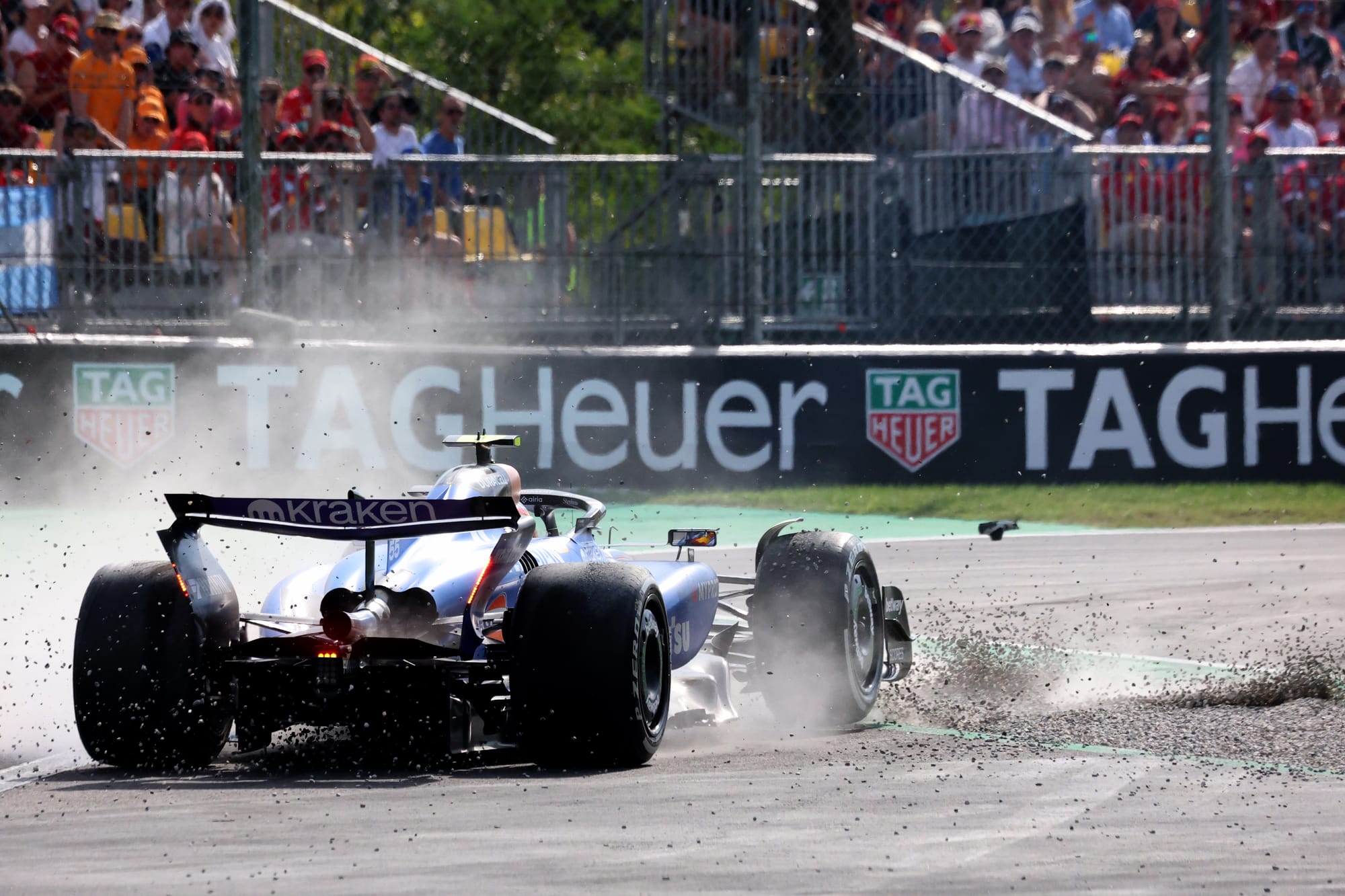
It's a curious catalogue of troubles for Sainz, some as a result of his own errors, some due to external factors then a few somewhere in between. No wonder he is frustrated.
“I’ve been feeling good with the car all year, relatively good,” he said after the race at Monza. “It’s not a car I love to drive, it’s not my driving style I love to do, [it] has a very particular thing that you need to do with the driving. But when you look at it for a first year, my qualifying record and my race pace is always good, it’s just putting a result together that we are struggling a lot as a team.
"[It’s] always little things, incidents, a little bit of strategy, a little bit of new things [meaning] that despite having good pace all year, we don’t seem to catch a break.”
It's a fair appraisal, and it stands to reason that this unusual run of troubles should settle down. However, even if it evens out and Sainz has a run of clean weekends, he still faces a tough battle with his team-mate. Just as it would be wrong to overlook the circumstances that have meant Sainz hasn’t had the results he has deserved, so too would it be unfair to ignore the high level Albon is operating at.
He’s had his fair share of misfortune as well, but has been better than Sainz at stringing together complete race weekends and that’s no surprise given the level he was operating at even before this year.
Sainz will come good at Williams, all the signs are there that this should come to pass given he has shown good underlying pace regularly and has in many ways, adapted well to the team.
But even if everything goes right, Albon would take some beating given his consistently outstanding performances. And that's the battle that, in the long term, could define Sainz's Williams stint.


